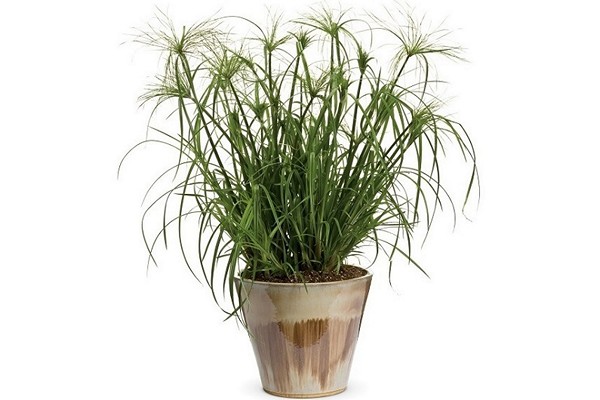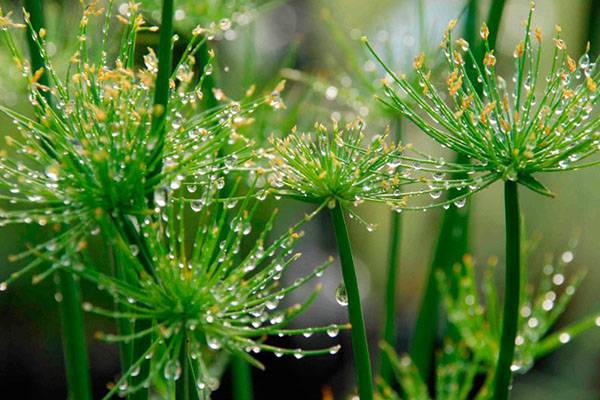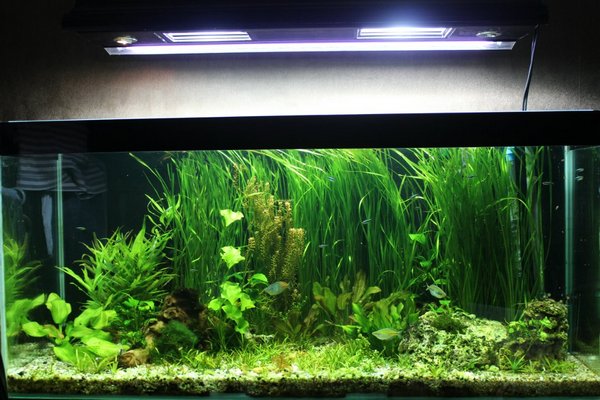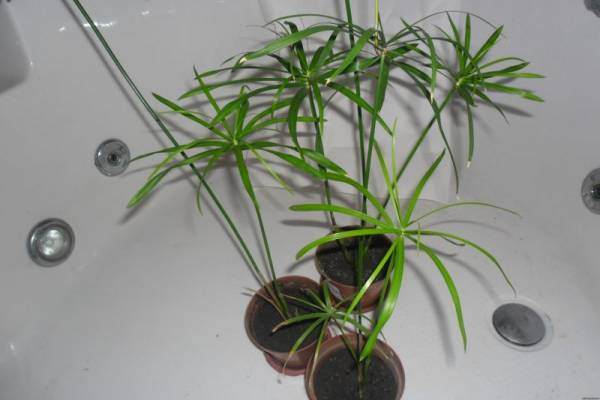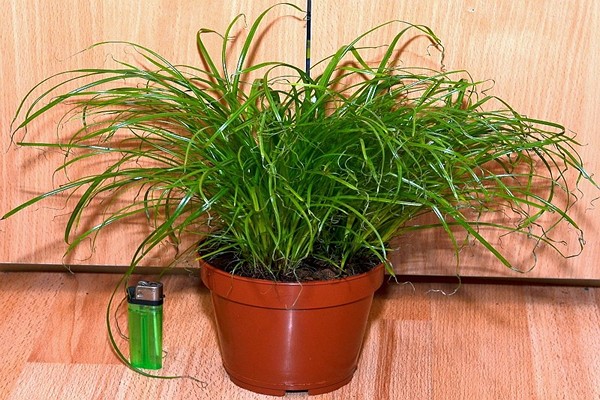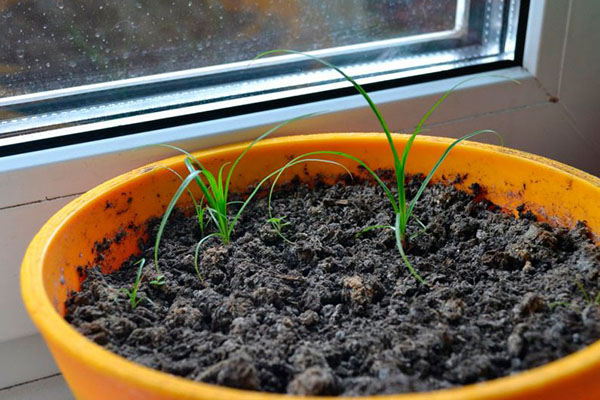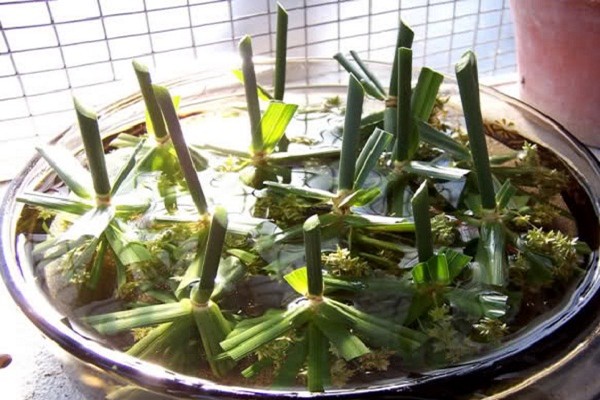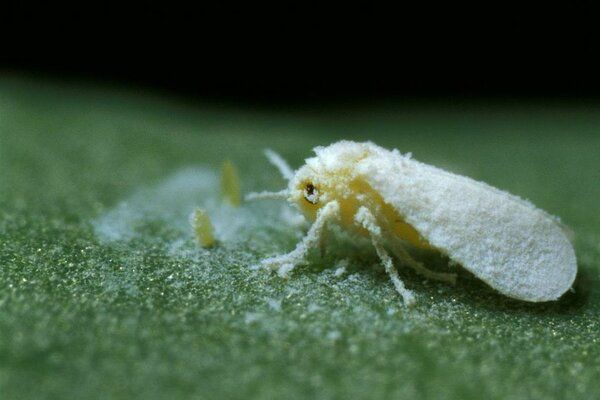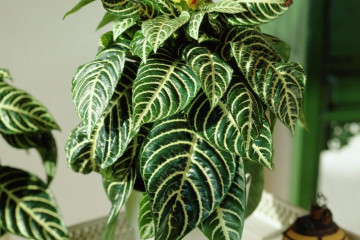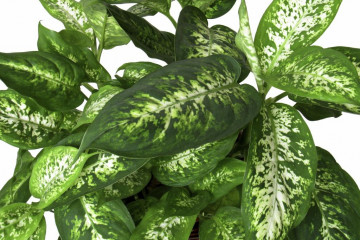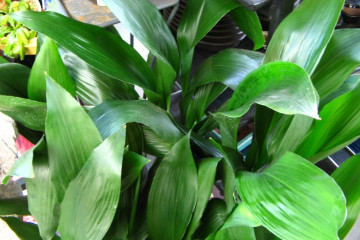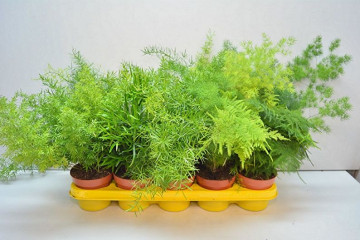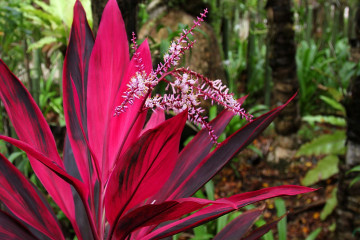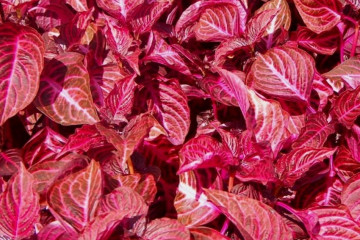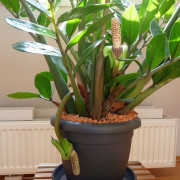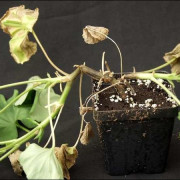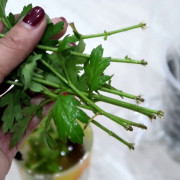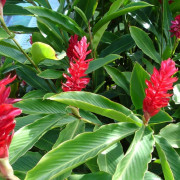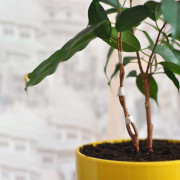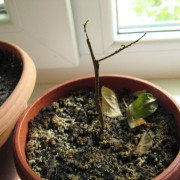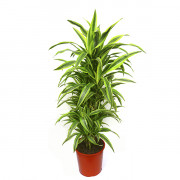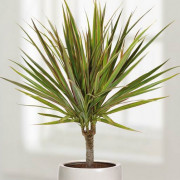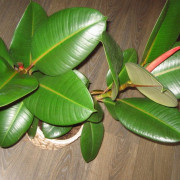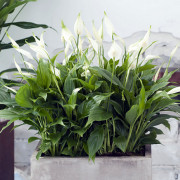Tsiperus flower - home care, soil
Content:
Cyperus flower is an unpretentious and hardy crop. It is often used to decorate individual areas of interiors that need decoration.
What does Cyperus look like, what family does it belong to?
Cyperus papyrus are synonymous names for the same flower. The plant is a representative of herbaceous perennials belonging to the sedge family. Under natural conditions, it grows up to 3 m in length, at home it does not have impressive dimensions.
The stems of the culture are erect, triangular, umbellate whorls are localized on them. Long and thin foliage can have different colors, some species are characterized by variegated flowers.
Common varieties
A list of commonly found houseplants is presented:
- Cyperus graceful - a dwarf subspecies, up to 30 cm in height. Small rooms are decorated with it.
- Cyperus variegated - with narrow, pointed, long and curved foliage. Stripes are scattered over the surface of the sheet plates.
- Cyperus papyrus - naturally grows in the Egyptian and Ethiopian swamps. Huge leaves hanging from whorls. Flowers are collected in inflorescences, located in deciduous axils.
- Spreading cyperus - grows up to 0.9 m, differs in a small number of stems. Numerous narrow and curved foliage is located in the root area. There are also dwarf types, whose height does not exceed 40 cm.
- Cyperus Zumula is a favorite delicacy of cats. The plant makes claims to moisture and watering, can grow in a regular pot or home pond.
Healing properties
The houseplant cyperus has a positive effect on vision and blood circulation in the brain. Its content is recommended for people who have problems with insomnia, headache attacks, distraction.
Features of caring for a flower at home
Cyperus home care requires knowledge of the rules of cultivation. Otherwise, he will not delight his owners with bright foliage, he will begin to shed it and gradually dry out.
Temperature
The plant requires in the summer to maintain a temperature regime in the range of 18-24 ℃ above zero. In the winter months, +14 ℃ is enough for him.
Lighting
Indoor flower requires diffused light. The peculiarity is associated with the possibility of getting burns on the leaves with prolonged exposure to the sun.
Watering
The plant does not tolerate waterloggedness in the box, but it also quickly dies in excessively dry soil. Florists advise to water through a tray - this way it is easier to control the volume of liquid and remove unused residues.
Spraying
You need to spray the foliage regularly. The list also includes water procedures, with the help of which the green part is freed from accumulated dust and dirt.
Humidity
The plant needs 70% moisture. To maintain it, a glass of water, a decorative fountain or an aquarium are placed next to the box.
Priming
The culture needs a neutral or slightly acidic soil, the composition of which is represented by:
- turf;
- humus;
- silt;
- sand;
- leafy ground.
Top dressing
The complex mineral solution is applied on spring days. Subsequent procedures are performed every two weeks or once a month.
Features of care in winter, dormant period
In winter, the alternate-leaved indoor cyperus flower needs additional lighting. The number of irrigations is reduced by 2 times. In the cold season, feeding is carried out several times.
Pruning
Caring for variegated cyperus involves the timely removal of green shoots. If you ignore the recommendations, the plant will become the same color over time. Old, yellowed or weak shoots will droop.
How to propagate cyperus
Reproduction of cyperus is possible in several ways. Each florist chooses the most practical option for himself.
Germinating seeds
Cyperus from seeds is germinated according to the following scheme:
- Seed material is planted in a sand and peat mixture.
- The surface of the earth is lightly tamped.
- It is moistened with a spray bottle.
- The container is covered with plastic wrap or parchment to create a greenhouse effect.
- The boxes are periodically ventilated and watered.
- After the emergence of sprouts with two leaves, young individuals are seated in separate pots.
Rooting cuttings
Cutting involves pruning young shoots, dividing them into small parts. Cuttings placed in a glass of water quickly take root, after which they are seated in boxes.
Air layering
The raw material is young rosettes that form in the central part of the old ones. When pruning, part of the stem is captured, planting is done "upside down". The umbrella should be facing down. After a while, the plants will begin to multiply and you can wait for the appearance of new shoots.
Other options
When transplanting adults, the tubers are divided. The resulting independent plants are planted in different containers. During the procedure, the cut sites are sprinkled with activated charcoal or charcoal powder.
Transfer
Young growth needs an annual transplant, adult plants every 3 years, as needed. You can plant a plant at any time of the year, there are no special requirements in this case.
A drainage layer is poured at the bottom of the box. The culture should occupy one fourth of the total capacity. Because of the shallow root system, shallow but wide boxes are chosen.
Possible growing problems and diseases
Most diseases are caused by the fault of the grower or by attacks of insect pests.
Drops buds and leaves
Problems with cyperus palm flowering and foliage loss are often associated with insufficient watering. The issue is solved by increasing the frequency of watering.
Leaves turn pale
A change in the color shade of leaf plates is provoked by a lack of lighting or pest attacks. In the first version, the culture is transferred to a sunny windowsill, in the second, insecticides are used.
The tips of the leaves dry
Drying of foliage is caused by low air humidity. Treatment consists in spraying the culture and the area around it with a spray bottle at least twice a day. Additionally, humidifiers are used, a glass of water is placed or the container is transferred closer to the aquarium.
The lower leaves fall
Unreasonable loss of foliage is associated with low temperatures - a plant needs a regime of +15 ℃ and above. The box must be moved to a warm room, and damaged leaves and stems must be removed.
Pests
The culture is attacked by spider mites, mealybugs, thrips, whiteflies. The main symptoms of parasite infestation are:
- punctures on the edge of the sheet plates;
- white cobweb located in the internode zone and under the leaves;
- deformation and yellowing of the green part;
- sticky bloom and whitish spots.
Other problems
The slow growth of the plant is associated with a deficiency of nutrients in the ground. The problem is solved by replacing the top layers with fertile soil or transplanting.
If new stems do not appear, lack of sunlight becomes the source. The box is transferred to the east or south windowsill, not forgetting to shade the culture, protecting it from burns.
Signs and superstitions
There are beliefs that culture can be used not only to decorate the house, but also to obtain positive energy. The plant is able to care for household members and protect all family members from trouble:
- deception;
- bad intentions of strangers and close people;
- the development of depressive conditions.
Cyperus (not to be confused with Cereus) refers to plants that do not require special care and special living conditions. Timely watering, feeding and pruning will help you grow a beautiful and healthy crop.
